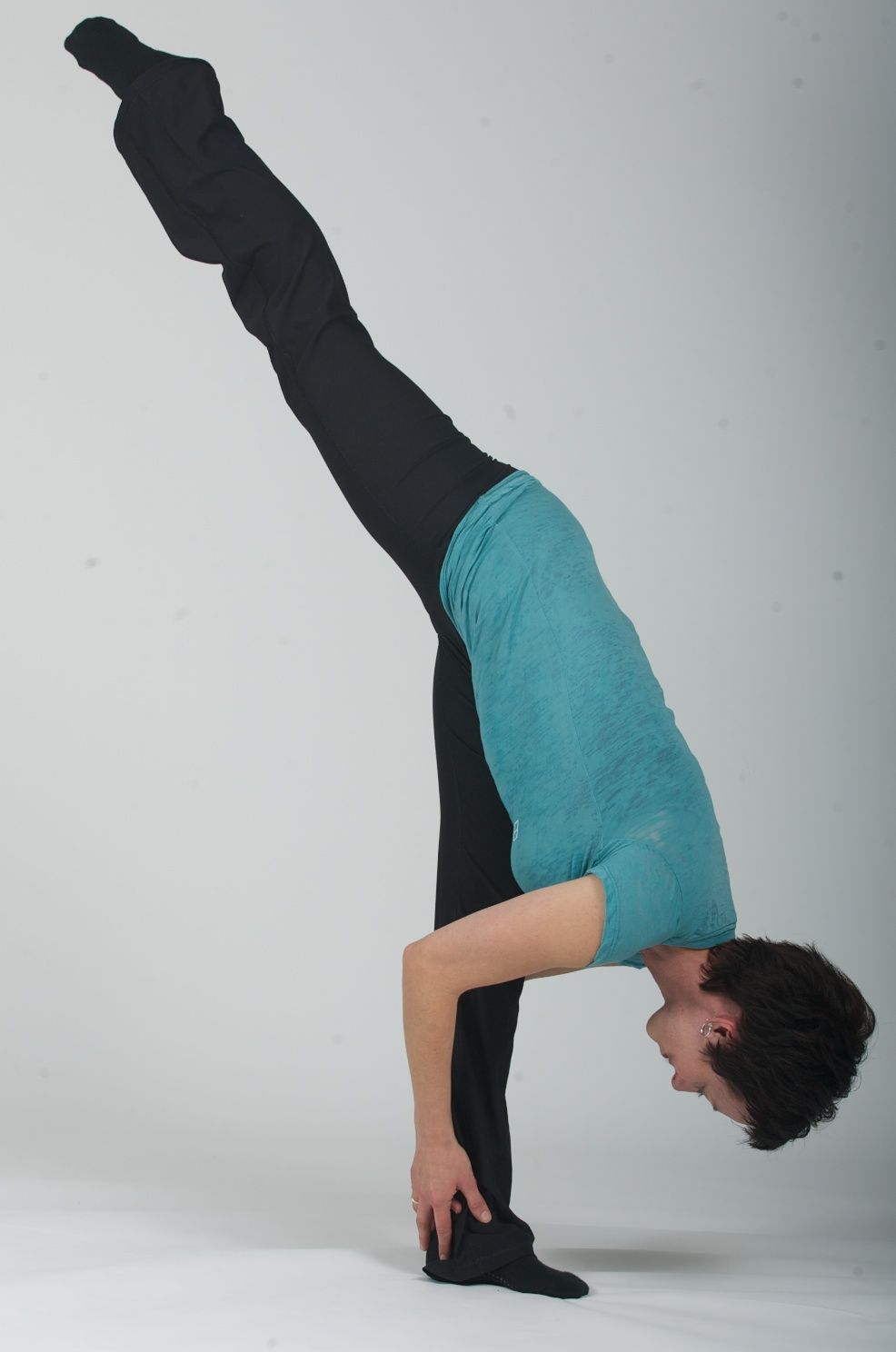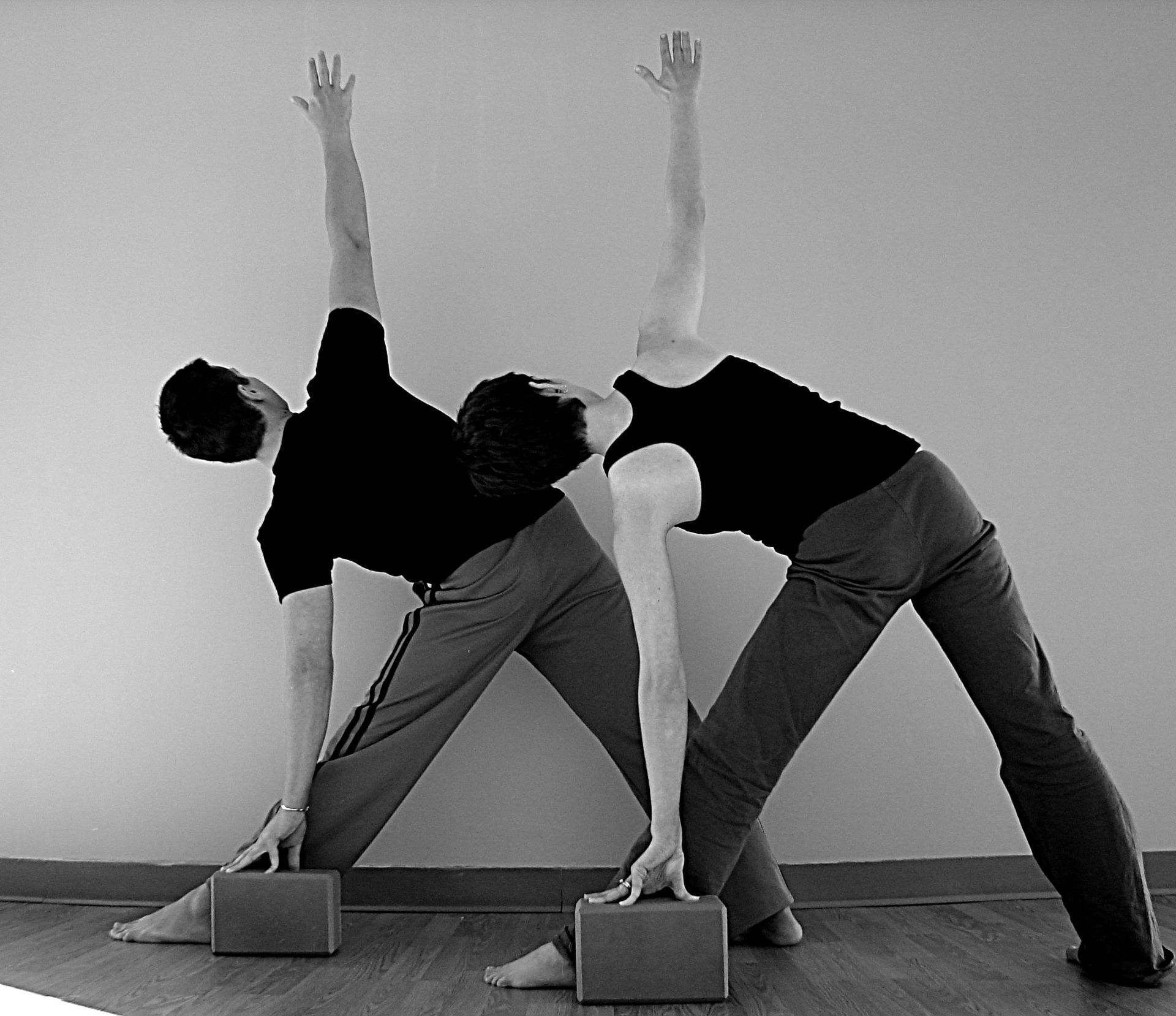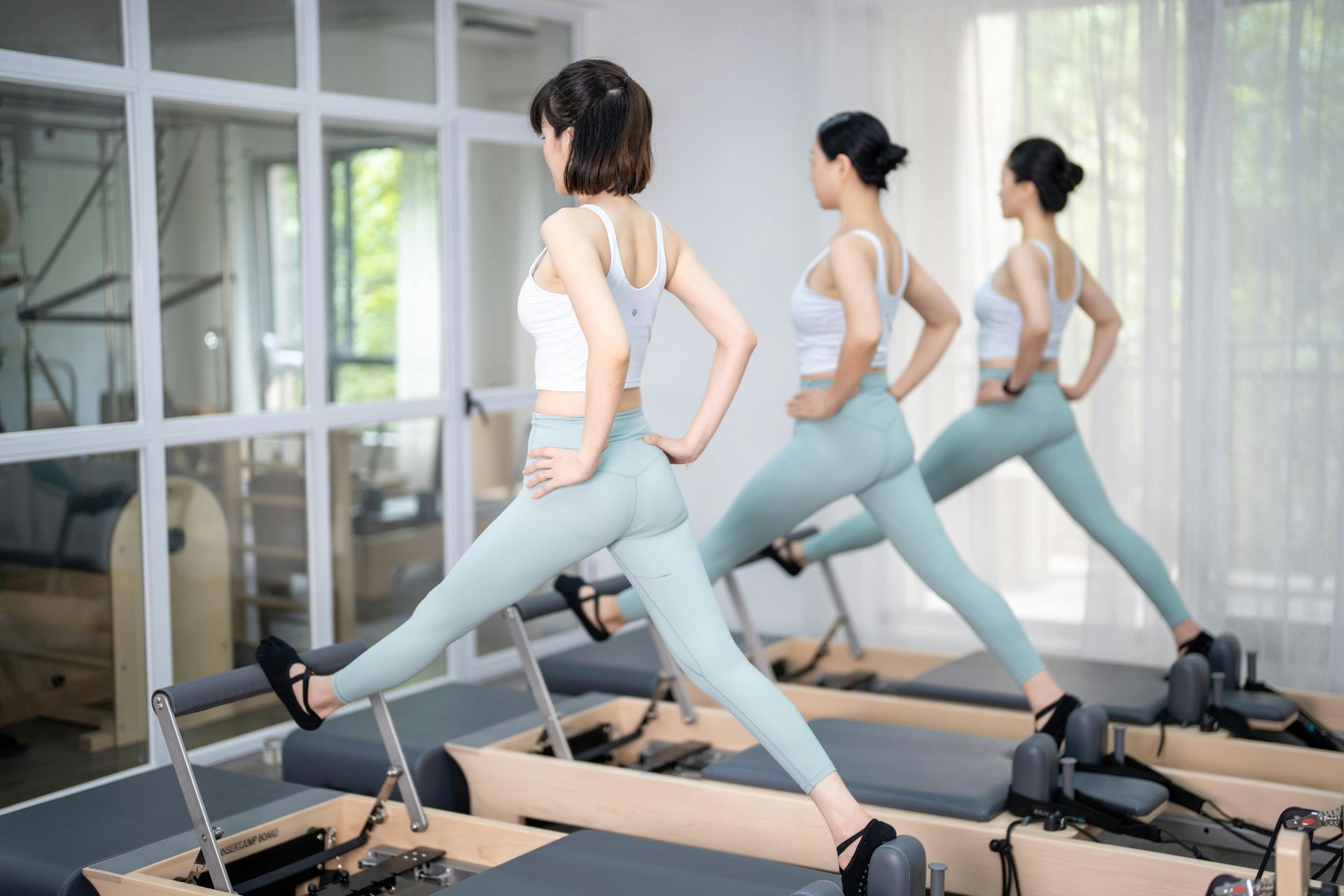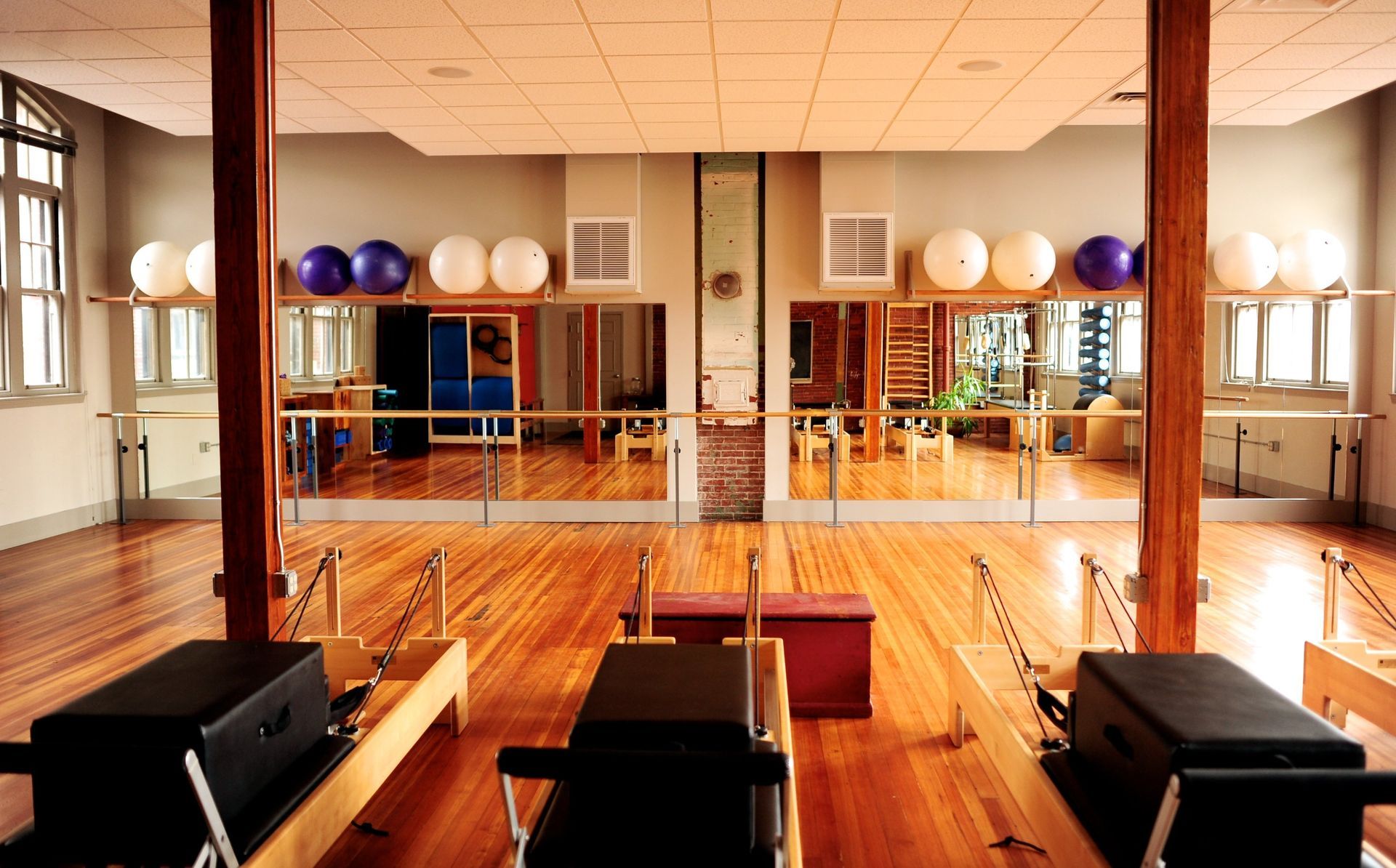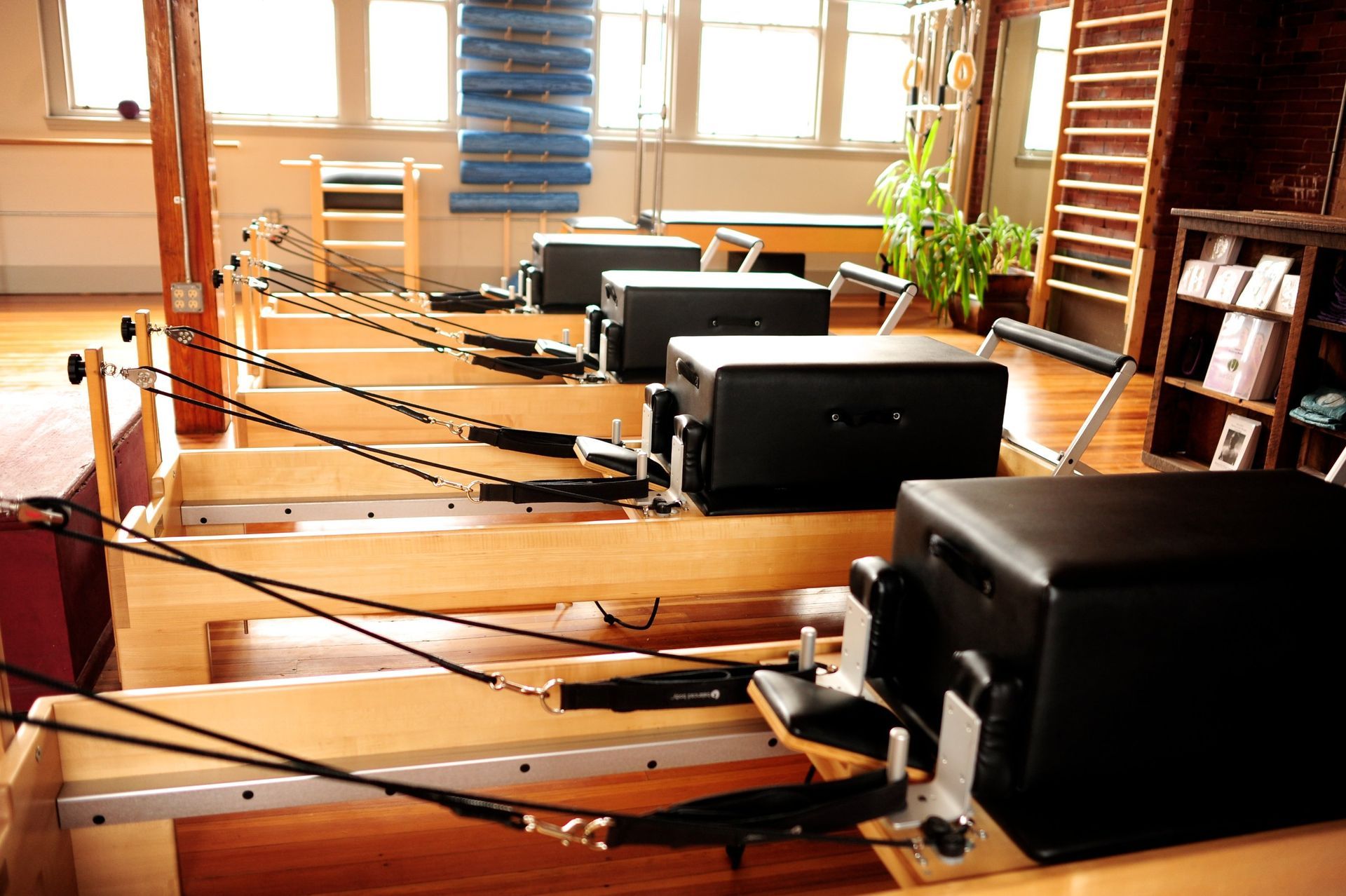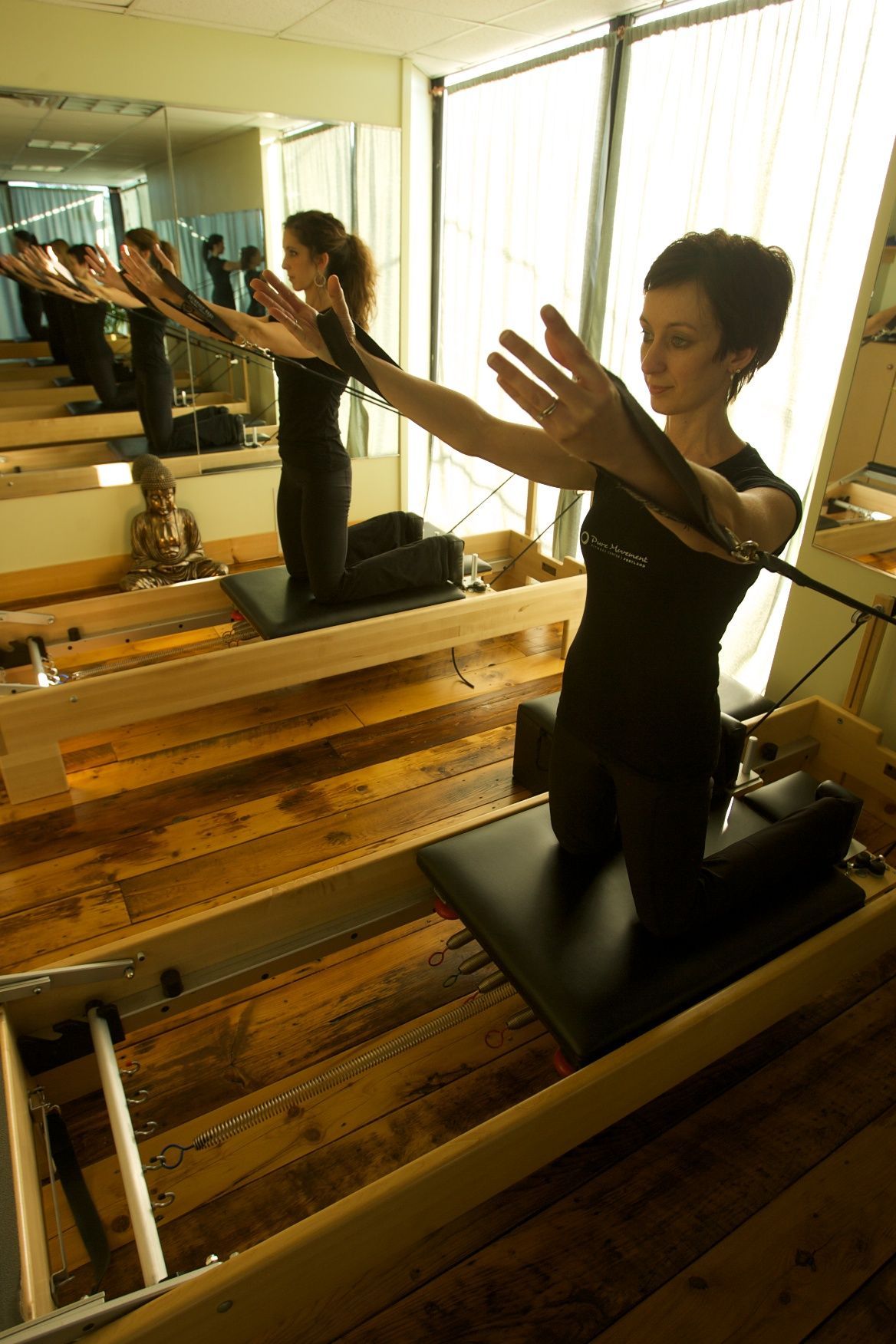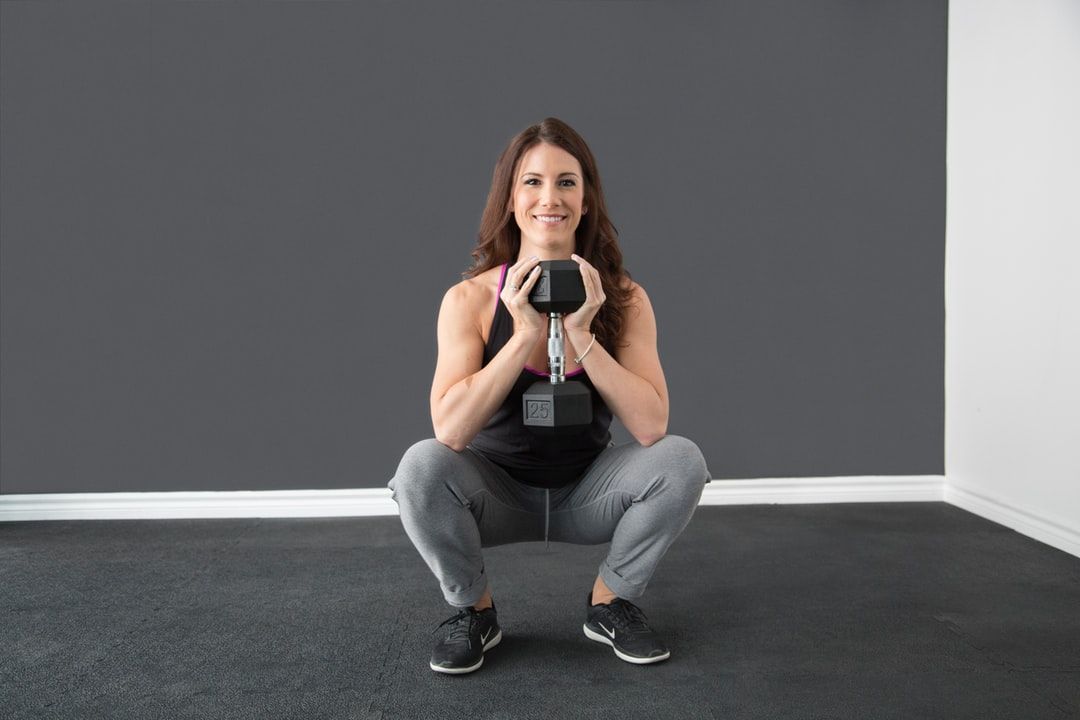Understanding SI Joint Pain
How It Mimics, Differs from, and Interacts with Sciatica
Understanding SI Joint Pain:
Subtitle:
When the Pain Isn’t Just in Your Head—or Your Back: How to Tell If It’s Your SI Joint, Sciatica, or Something Else Entirely
If you’ve ever experienced lower back pain that radiates down your leg, you're likely familiar with the term sciatica. But what if the pain isn’t coming from a herniated disc or nerve compression at all? What if it’s your sacroiliac joint—the often-overlooked yet essential connection point between your spine and pelvis?
In this post, we’ll break down the mystery of SI joint dysfunction, why it often gets confused with sciatica, how to start telling the difference, and what gentle, Pilates-based strategies and stretches might help you manage symptoms or support recovery.
The SI Joint: What (and Where) It Is
The sacroiliac (SI) joint is where your sacrum (the base of your spine) meets your ilium (the large bones of the pelvis). There’s one joint on each side of the body. These joints don’t move much, but they absorb and transfer load between the upper body and legs.
When the SI joint becomes dysfunctional—either too tight, too loose, or inflamed—it can cause localized pain, stiffness, and even radiating discomfort that mimics other conditions.
My Experience Working with Clients (And My Own Body)
In 2020, I dealt with a herniated L5-S1 disc that brought on intense sciatic pain—shooting down my leg to my toes. It was sharp, deep, and persistent. But over the years, as I’ve worked with clients, I’ve seen many people describe a similar kind of pain that didn’t turn out to be sciatica.
Instead, it was SI joint dysfunction.
A major difference I’ve noticed in clients with SI joint pain: they often can’t tolerate pelvic tilting at all. Especially posterior tilts—that motion you make to “tuck” the tailbone—can be unbearable. Where a spinal or nerve-related issue might allow for small movement, SI joint pain can feel like a brick wall. They freeze, flinch, or breathe sharply when asked to tilt the pelvis in either direction.
That tells me something deeper is going on—and often points to the SI joint.
SI Joint Dysfunction vs. Sciatica: Spot the Differences
Although the symptoms can overlap, here are a few general differences:
Symptom
SI Joint Dysfunction
Sciatica
Pain location
One side of lower back, buttock, can radiate to thigh (rarely past the knee)
Radiates from low back/buttocks down the leg, often to foot
Pain type
Dull, sharp, or stabbing—worse when sitting, climbing stairs, or standing unevenly
Burning, shooting, electric shock-like down the leg
Movements that worsen it
Pelvic tilting, standing on one leg, twisting
Forward bending, coughing/sneezing, prolonged sitting
Relief found through
Neutral spine, gentle stabilization, bilateral exercises
Extension (Swan), decompression, nerve flossing
Leg numbness or tingling
Rare
Common
These distinctions aren’t foolproof, but they’re a place to start. Proper diagnosis is crucial. If you're unsure whether you're dealing with sciatica, SI joint pain, or another form of back pain, you need to ask good questions—and so does your healthcare provider.
What to Ask Your Doctor or Physical Therapist
Here are a few helpful questions to bring into your next appointment:
- Can you help me determine if this is disc-related, SI joint-related, or muscular?
- Does this pain refer down my leg because of nerve irritation, or from joint dysfunction?
- Can you check for sacroiliac instability or inflammation?
- Are any of my muscles (glutes, hip flexors, pelvic floor) underactive or overactive?
- Could my leg length, gait, or previous injury be affecting my SI joint?
- What types of movement should I avoid—or include?
A qualified PT (Physical Therapist) will know how to test for SI joint involvement—often through palpation, movement tests like the FABER test, and simple load-bearing challenges. Many clients experience great relief through physical therapy, especially when manual therapy is combined with targeted strengthening.
What Causes SI Joint Pain?
The causes of SI joint dysfunction are varied but often come down to imbalance or instability:
- Pregnancy or postpartum changes (ligament laxity)
- Uneven leg length
- Prior trauma or falls
- Repetitive one-sided activities (think golf, tennis)
- Weak glutes and deep core
- Prolonged sitting or standing
When the support structures (like the glutes, pelvic floor, and transverse abdominis) don’t do their job, the SI joint takes on too much responsibility—and eventually fights back.
The Pilates Connection
I’ve worked with dozens of clients with SI joint issues who found relief not from aggressive treatment but from returning to mindful movement. Pilates, with its focus on alignment, breath, and core engagement, offers a powerful way to gently stabilize and support the area without aggravation.
Unlike traditional “core” exercises like crunches or planks, Pilates starts with the basics: finding neutral spine, breathing into the back ribs, and activating deep stabilizers without compression.
It also emphasizes bilateral work—meaning using both sides of the body evenly—which helps reduce SI joint irritation that can result from asymmetrical training or habits (like always crossing one leg or standing with weight on one side).
A Gentle Routine for SI Joint Relief
The following is a sample of Pilates-based movements and stretches I’ve seen help clients manage SI joint pain over time. These are not one-size-fits-all, and you should always consult with your provider before beginning any new movement if you're in pain.
1. Find Neutral Spine
Lying down:
- Knees bent, feet flat, arms long by your sides.
- Align the hip bones (ASIS) and pubic bone in the same horizontal plane.
- This is your "home base"—come back to it often.
Why it helps: Reduces pressure on the SI joint and gives the spine a balanced starting point.
2. Pelvic Clock (Without Tilting)
- Imagine your pelvis as a clock face.
- Gently “roll” awareness from 12 o’clock (navel) to 6 o’clock (pubic bone), and side to side (3 and 9).
- DO NOT exaggerate or push into the tilt. Keep the motion subtle and mostly mental.
Why it helps: Encourages subtle proprioception without stressing the joint.
3. Modified Swan (Elbows Down)
- Lie on your belly with elbows under shoulders, forearms flat.
- Gently press into forearms to lift the chest a few inches without tensing glutes or lower back.
- Keep pubic bone grounded, shoulders wide.
Why it helps: Promotes spinal extension without spinal compression or sacral shearing.
4. Bridge with a Ball or Ring
- Lie on back, feet flat, knees bent.
- Place a small Pilates ball or pillow between the knees.
- Squeeze gently and lift hips to a small hover—no need for a full bridge.
- Focus on engaging glutes and inner thighs equally.
Why it helps: Recruits pelvic floor and stabilizing muscles in a symmetrical way.
5. Figure Four Stretch (With Caution)
- Cross one ankle over the opposite thigh and gently pull the thigh toward your chest.
- Only go as far as feels neutral—stop if any pelvic tilting brings on pain.
- Keep pelvis as level as possible.
Why it helps: Opens tight glutes and piriformis without excessive spinal or SI movement.
6. Side-Lying Leg Lifts
- Lie on one side, hips stacked, legs straight.
- Lift the top leg a few inches and lower slowly.
- Keep waist long and avoid rolling the pelvis back.
Why it helps: Strengthens glute medius and outer hip—crucial for SI joint support.
The Green, Yellow, and Red Light System
As I shared in my sciatica blog post, I often use a traffic light system to guide pain management in movement:
- Green Light = Feels good or neutral → Keep going
- Yellow Light = Some discomfort → Move mindfully, proceed with caution
- Red Light = Sharp pain, instability → Stop immediately and reassess
Your job isn’t to push through pain—it’s to listen, adapt, and build trust with your body over time.
Final Thoughts: You're Not Alone
SI joint pain can be deeply frustrating. It’s not always visible. It’s often misunderstood. And it can feel like there’s no clear path to healing. But the truth is: you are not alone, and there are steps you can take to support your body.
From thoughtful Pilates movements to working with a skilled PT, relief is possible, and more often than not, it comes from tuning in—not tuning out.
Start with what you can do today: find your neutral, breathe into your ribs, and support your spine from the center outward.


